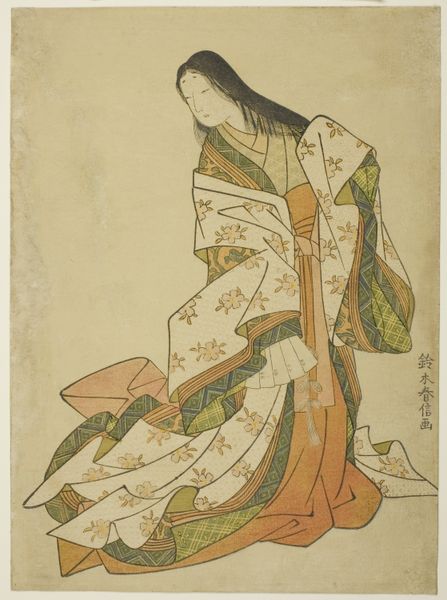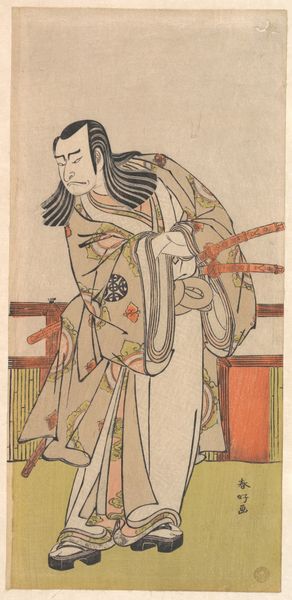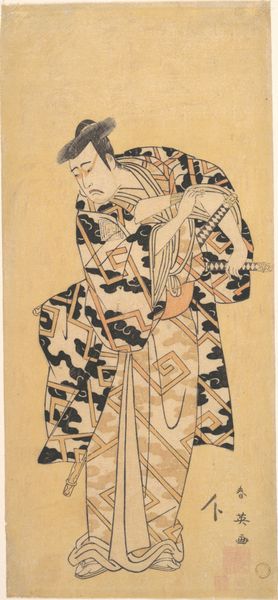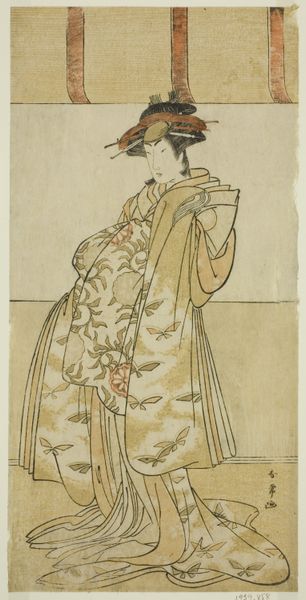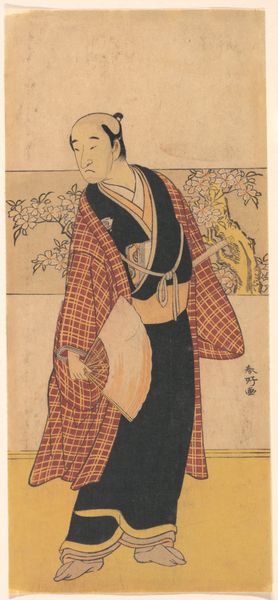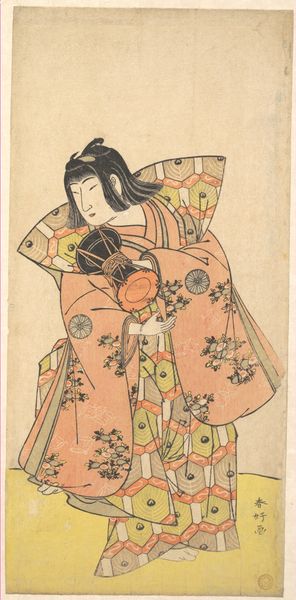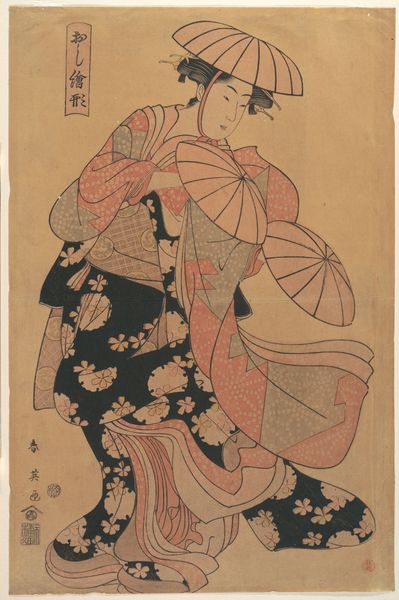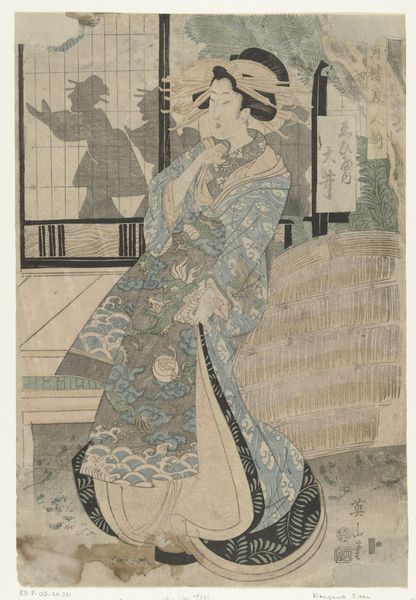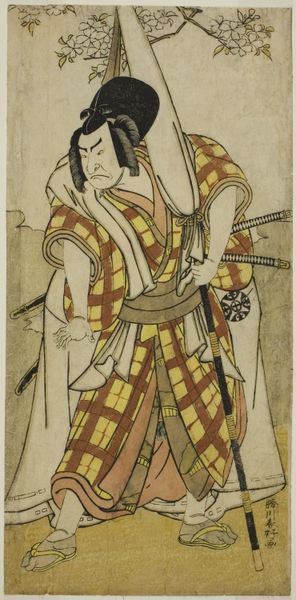
The Actor Nakamura Sukegoro II as Sasano Sangobei in Part Two of the Play Iro Moyo Aoyagi Soga (Green Willow Soga of Erotic Design), Performed at the Nakamura Theater in the Second Month, 1775 c. 1775
0:00
0:00
print, ink, woodblock-print
#
portrait
#
ink painting
# print
#
asian-art
#
ukiyo-e
#
figuration
#
ink
#
woodblock-print
Dimensions: 32.3 × 15 cm (12 5/8 × 5 7/8 in.)
Copyright: Public Domain
Curator: Rantokusai Shundō’s woodblock print, made around 1775, features the actor Nakamura Sukegoro II in the role of Sasano Sangobei. The print, now held at the Art Institute of Chicago, presents us with an iconic image from the Kabuki theater. Editor: The patterned robe is immediately striking. It feels almost tactile, like I could reach out and feel the weave. The man's stance is curious—there's a controlled tension, a suppressed energy. Curator: The tension is deliberate. Kabuki aimed to represent highly stylized, heightened versions of life and history. What does it tell us about identity and performance? Here we have a male actor playing a male role within a story already infused with social meaning and critique. What layers of constructed masculinity are at play? Editor: And consider the craft here. Each color, each line, meticulously carved from wood. How many prints were made? Who purchased them? Were they wealthy patrons, or was it affordable enough for wider segments of the population to engage with Kabuki beyond the theater itself? The labor involved in the production fascinates me. Curator: Indeed. And it's not just about wealth. The prints allowed people across social strata to engage with narratives that subtly questioned social norms and class boundaries. Think of the commentary embedded in the choice of theatrical subjects: tales of loyalty, revenge, social disruption... these resonated far beyond the elite. Editor: Right, this piece connects to both art and industry! Plus, what ink was used here? The color seems to have survived brilliantly, although with some natural discolourations due to light exposition over time. And if you focus your vision, you will see it shows every individual piece of the door behind the depicted actor, but what is more interesting is to consider its symbolic implications for set construction. Curator: So we return to our initial impression, not only an individual, but the sum total of artistic and labor effort. But moreover a point where to rethink all the political connotations carried across centuries. Editor: I think I'll stick around and see what else the materials of ukiyo-e can tell us!
Comments
No comments
Be the first to comment and join the conversation on the ultimate creative platform.
